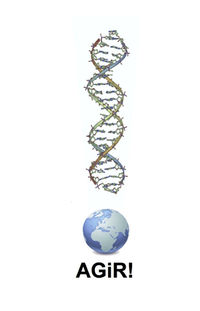Difference between revisions of "Micronuclei and Mercury"
| Line 63: | Line 63: | ||
We can do this workshop for any age from 9 to 99, and hope you will want to try! | We can do this workshop for any age from 9 to 99, and hope you will want to try! | ||
<br> | <br> | ||
| + | |||
| + | For 20 participants making 2 slides each, the '''basic needs for the workshop''' include: | ||
| + | *20 toothbrushes (always ask people to bring their own, as they say it takes 1000 years for a plastic toothbrush to degrade, and to make sure they are cleaned, as pelleting toothpaste residue with the cells is disappointing!) | ||
| + | *'''Saline solution''' (at least 200ml - can make with NaCl or get physiological solution at pharmacy) | ||
| + | *'''20 small glasses''' - to put 10ml into each, for washing off the collected cells | ||
| + | *microcentrifuge - to pellet cells | ||
| + | *40 microcentrifuge tubes - two for each participant, to 'harvest' their cells | ||
| + | *20 transfer pipettes - to put the cells in saline into the centrifuge tubes | ||
| + | *liquid waste containers (x4 is convenient - just glass cups work fine, saline can just go down the drain, but for meblue waste, I prefer running it over an activated charcoal filter, to avoid putting the dye down the drain) | ||
== Recommendation + next steps == | == Recommendation + next steps == | ||
Revision as of 09:52, 8 September 2019
Genomic integrity is a new 'big picture' concept to aid public health efforts and basically includes all the molecular genetic details of cells!
So many things we commonly choose to do can impact genomic integrity, also potentially affecting future generations!
Pollution that we can rarely choose to avoid is a key problem affecting genomic integrity, that sometimes cannot be avoided by local populations. For instance, mercury, like that which pollutes many areas where gold mining is pursued (legally or illegally).
One way to measure effects of mercury pollution in cells is the micronucleus assay.
Introduction
After a visit to the site of the old Hackuarium in November 2018 by members of MáS ARTE MáS ACCIóN, Rachel was invited by Fernando and Alejandra to join in co-constructing a project with a group of Swiss artists sponsored by ProHelvetia.
Concern about a mercury-empoisoned river, people in its vicinity and hoping to reach people in creative way, the current Hackuarium president, Rachel, jumped at the chance. Perhaps genomic integrity could be protected in the long run with some action...
Perhaps micronuclei workshops will be run with many kids from 3 locations during the next visit?
Context
In Colombia
In Switzerland
People
Fernando Alejandra Andrés Ox Jonathan Steve? (bogota researcher) Mabel (quibdo`researcher) Bella Yuli Camilo more!!
Main Goals
make the world a better place
Objectives
perhaps help provide evidence that 'bio-gold' is every bit as valuable as bio-foodstuffs!
we wonder if this magnificent woman would be our image for this campaign??
Background & Inspiration
Protocol (Plan)
Setup description
Needs for workshop
The most important point of this wiki page in Hackuarium, is to define the needs and consumables for the simplest micronucleus assay, for 20 participants.
We can do this workshop for any age from 9 to 99, and hope you will want to try!
For 20 participants making 2 slides each, the basic needs for the workshop include:
- 20 toothbrushes (always ask people to bring their own, as they say it takes 1000 years for a plastic toothbrush to degrade, and to make sure they are cleaned, as pelleting toothpaste residue with the cells is disappointing!)
- Saline solution (at least 200ml - can make with NaCl or get physiological solution at pharmacy)
- 20 small glasses - to put 10ml into each, for washing off the collected cells
- microcentrifuge - to pellet cells
- 40 microcentrifuge tubes - two for each participant, to 'harvest' their cells
- 20 transfer pipettes - to put the cells in saline into the centrifuge tubes
- liquid waste containers (x4 is convenient - just glass cups work fine, saline can just go down the drain, but for meblue waste, I prefer running it over an activated charcoal filter, to avoid putting the dye down the drain)
